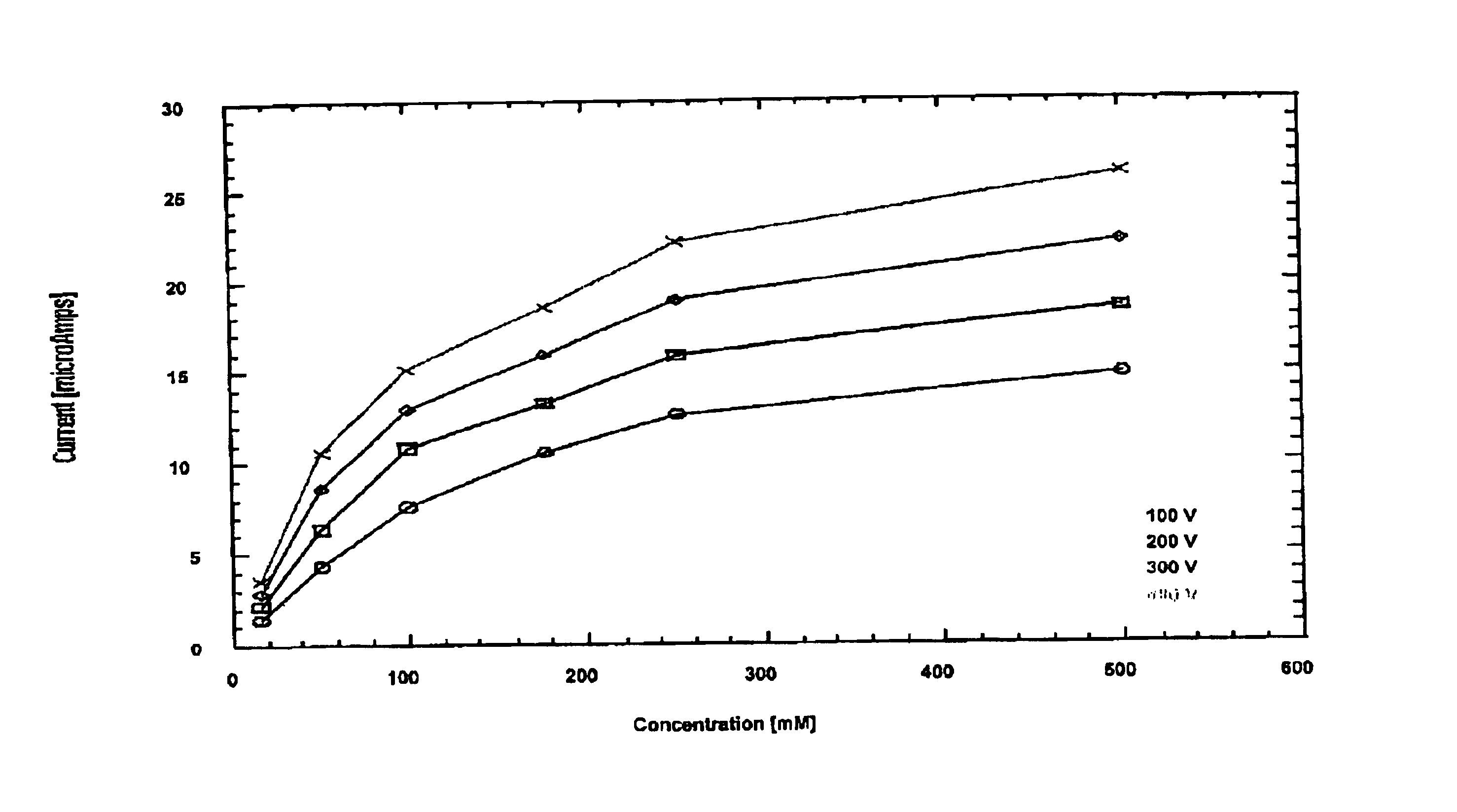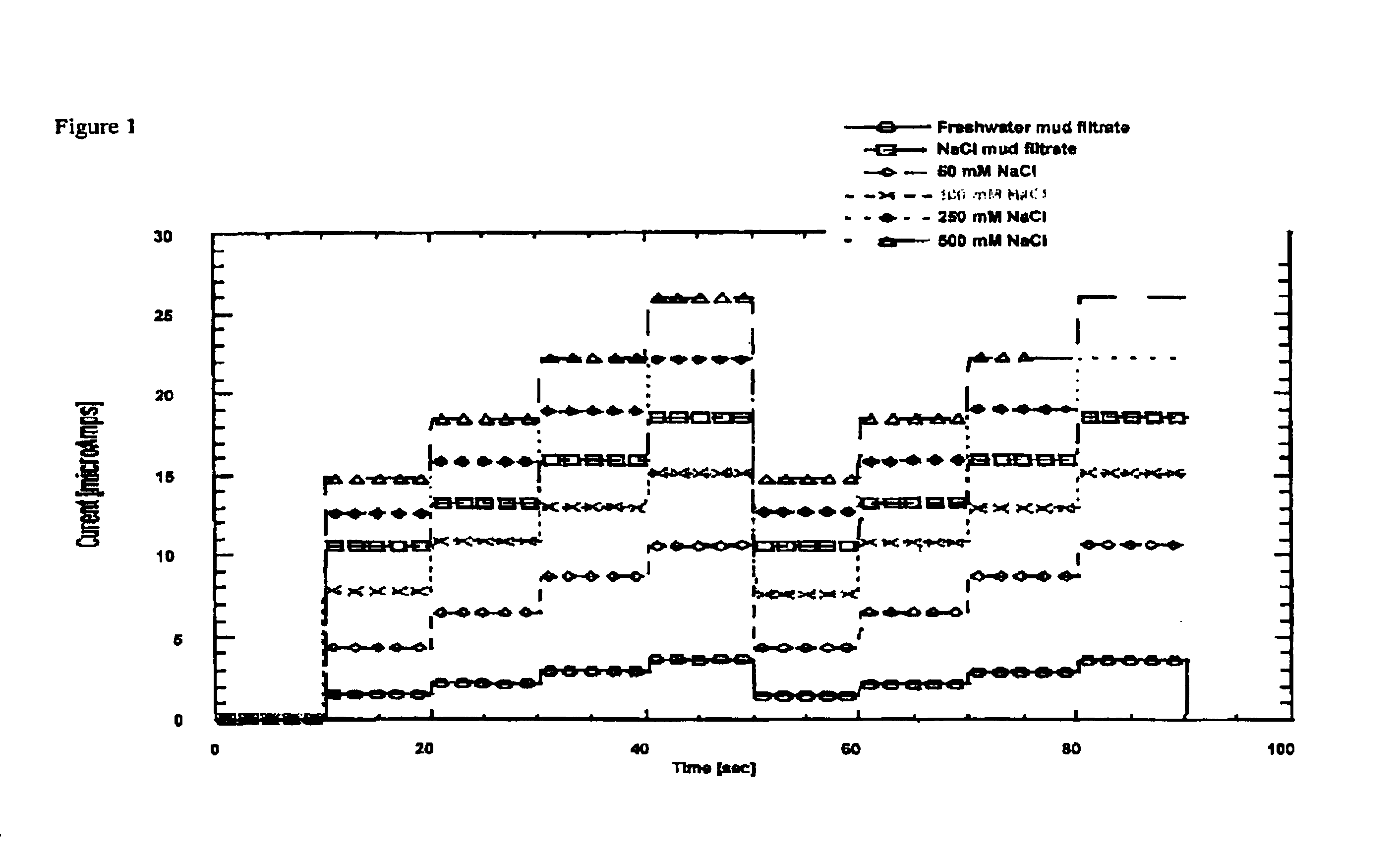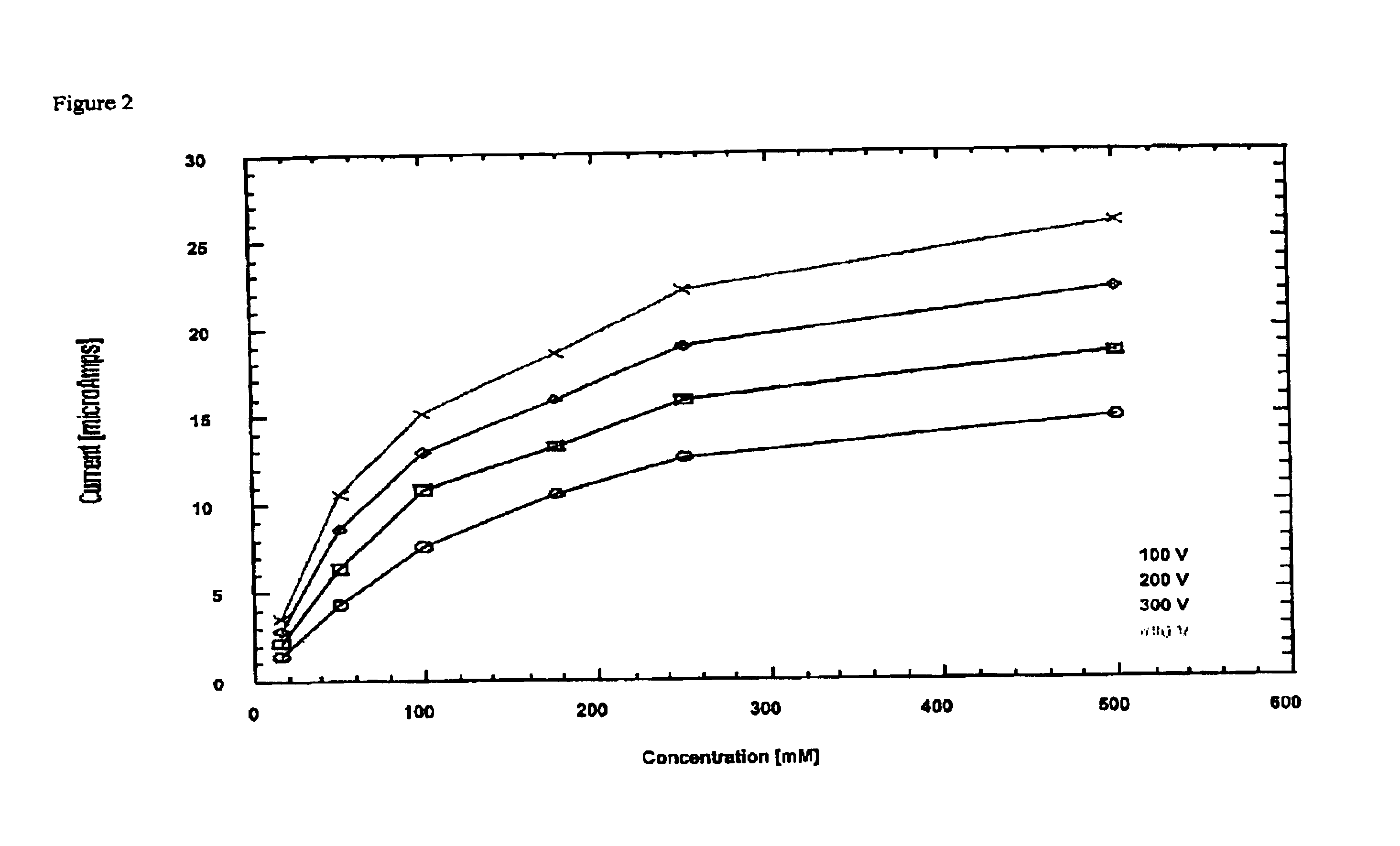Method for measuring fluid chemistry in drilling and production operations
a technology of fluid chemistry and production operations, applied in the field of measuring and analysing drilling, drilling, drilling completion, productionand formation fluids, can solve the problems of not entirely satisfactory analytical tools, simple, yet relatively time-consuming analytical tests, and large variation in applications, so as to achieve minimal human and environmental impacts, minimal sample size, and minimal turn-around time
- Summary
- Abstract
- Description
- Claims
- Application Information
AI Technical Summary
Benefits of technology
Problems solved by technology
Method used
Image
Examples
example 1
[0088]In Example 1, resistivity or conductance of freshwater / PHPA drilling fluid filtrate and of sodium chloride / PHPA was measured. The fluid was 2M NaCl in a buffer, 10 mM Tris pH 7.5. The stock solution was diluted with water to working solutions of 50 mM, 100 mM, 250 mM, and 500 mM. The freshwater / PHPA filtrate was used undiluted, while the saltwater / PHPA filtrate was diluted 1:10.
[0089]The microfluidic device that was employed for measuring the resisitvity used at least three wells to hold the fluids: sample fluid, standard fluid and waste well. The wells were connected to each other and all to the waste well.
[0090]Before use the chip was cleaned with a 1 Normal NaOH solution, and flushed with buffer before introducing the sample and the standard fluids. A voltage of 100V, 200V, 300V and 400 V was applied across the channels and the responding current was measured, thus calculation of the resistance was possible using aforementioned Equation 1. A software program was employed to...
example 2
[0095]In Example 2 chloride concentration was measured. The measurement principle in this experiment is fluorescence. The microfluidic device that was employed for measuring the chloride concentration used at least five wells to hold the fluids: sample fluid, standard fluid, buffer, dye and waste well. The wells were connected to each other and all to the waste well. The standard stock was 100 mM NaCl in a buffer, 10 mM borate buffer pH 9.2. The working solution was 100 mM diluted with 10 mM borate buffer pH 9.2. The dye was 40 μM Lucigenin in 10 mM borate buffer pH 9.2. The samples were freshwater and 10% NaCl drilling fluid. The freshwater sample was used undiluted, while the NaCl-containing drilling fluid filtrate was diluted 1:17. The protocol is as follows:[0096](1) Cleaning the chip with 1 Normal NaOH solution and flushing the chip with HPLC grade water.[0097](2) Then the water was removed from the wells and the wells loaded with the sample, standard, buffer, and dye. A softwa...
example 3
[0101]The third example shows the measurement of calcium concentration in a microfluidic chip. The measurement principle, again, is fluorescence, but here a fluorescent dye, fluo-5N (U.S. Pat. No. 5,049,673) is used. This dye increases its intensity upon addition of calcium. Note a similar response can be achieved using Oregon Green (BAPTA-2 octapotassium salt, patented and available from Molecular Probes). The sample preparation is as follows: five micromolar of Fluo-5N is diluted in a MOPS buffer. The starting concentration of calcium in the standard solution is 60 mM. The result is shown in FIG. 5. The first two steps of the stair steps are the buffer-base line and the 100% dye line the subsequent steps are of 1:16; 1:8 and 1:4 addition of the 60 mM calcium-buffer solution. The second stair step, using buffer solution and a 60 mM calcium solution (representing the test fluid) in separate wells is an identical stair case to the first staircase.
PUM
| Property | Measurement | Unit |
|---|---|---|
| wavelength | aaaaa | aaaaa |
| excitation wavelengths | aaaaa | aaaaa |
| excitation wavelengths | aaaaa | aaaaa |
Abstract
Description
Claims
Application Information
 Login to View More
Login to View More - R&D
- Intellectual Property
- Life Sciences
- Materials
- Tech Scout
- Unparalleled Data Quality
- Higher Quality Content
- 60% Fewer Hallucinations
Browse by: Latest US Patents, China's latest patents, Technical Efficacy Thesaurus, Application Domain, Technology Topic, Popular Technical Reports.
© 2025 PatSnap. All rights reserved.Legal|Privacy policy|Modern Slavery Act Transparency Statement|Sitemap|About US| Contact US: help@patsnap.com



